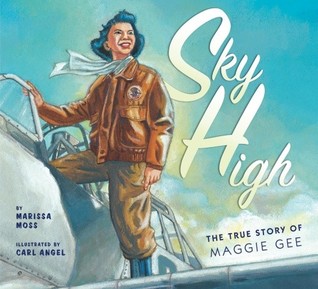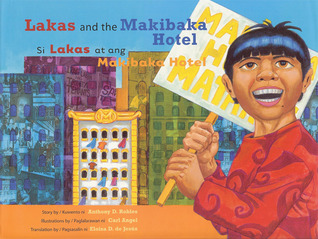Chin, C. (1993). China’s bravest girl:The legend of Hua Mu Lan (T. Arai, Illustrator, W. X. Chu, Trans.). San Francisco, CA: Children’s Book Press.
Summary: This is the story of Hua Mu Lan, the warrior who pretended to be a man and was a hero in the war protecting China against her invaders. Here it is written in verse.
Review: Beautiful pictures and verse makes this story come alive.
Diversity: This is a Chinese folktale.
Diversity: This is a Chinese folktale.
Suggestions for Teachers: This book could be a read aloud when discussing verse or heroes. It would do nicely to contrast with the princess phenomenon.
Reading Level:
- Quantitative: Lexile 420-820L, ATOS Book Level 2.75-5.14, Flesh-Kincaid 1.98-5.34, 3.53-6.13RMM
- Qualitative: This text is moderately complex. It is told chronologically. It is written in verse with an ABCB pattern that students will enjoy hearing. Many students will have background of this story from the Disney film version Mulan.
- Content Areas: English Language Arts, History
Common Core State Standards:
CCSS.ELA-LITERACY.RL.2.2
Recount stories, including fables and folktales from diverse cultures, and determine their central message, lesson, or moral.
CCSS.ELA-LITERACY.RL.2.3
Describe how characters in a story respond to major events and challenges.
Recount stories, including fables and folktales from diverse cultures, and determine their central message, lesson, or moral.
CCSS.ELA-LITERACY.RL.2.3
Describe how characters in a story respond to major events and challenges.
CCSS.ELA-LITERACY.RL.2.5
Describe the overall structure of a story, including describing how the beginning introduces the story and the ending concludes the action.
Describe the overall structure of a story, including describing how the beginning introduces the story and the ending concludes the action.
CCSS.ELA-LITERACY.RL.2.6
Acknowledge differences in the points of view of characters, including by speaking in a different voice for each character when reading dialogue aloud.
CCSS.ELA-LITERACY.RL.2.9
Compare and contrast two or more versions of the same story (e.g., Cinderella stories) by different authors or from different cultures.
Acknowledge differences in the points of view of characters, including by speaking in a different voice for each character when reading dialogue aloud.
CCSS.ELA-LITERACY.RL.2.9
Compare and contrast two or more versions of the same story (e.g., Cinderella stories) by different authors or from different cultures.
Subjects/Themes: women, China, legends
Awards: N/A
Series Information: N/A
Series Information: N/A









